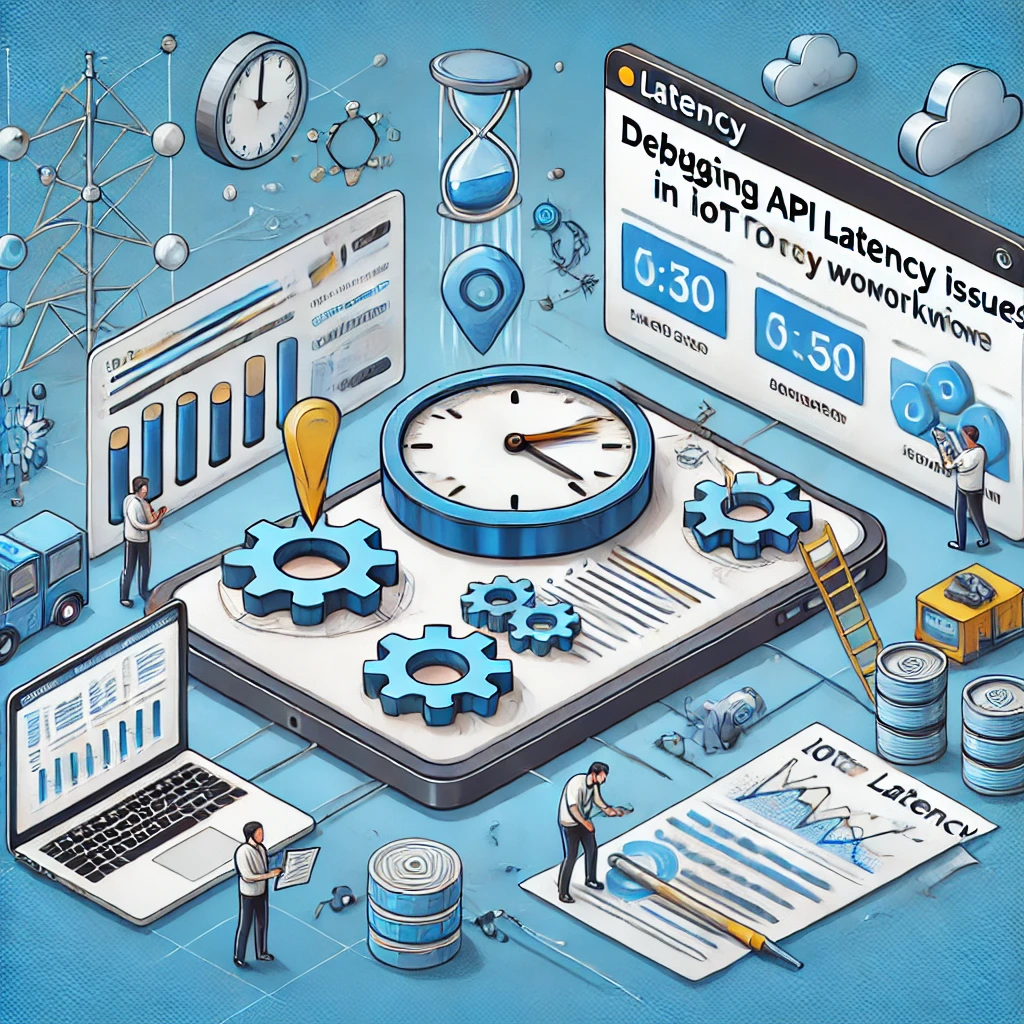Debugging API Latency Issues in IoT Workflows with Syncloop

Syncloop provides robust tools for debugging and optimizing API latency in IoT workflows. With features like real-time monitoring, distributed tracing, and workflow automation, Syncloop helps developers detect bottlenecks and implement solutions effectively. This blog explores common causes of API latency in IoT workflows, how Syncloop addresses these challenges, and best practices for minimizing delays.
The Impact of Latency in IoT Workflows
Latency issues in IoT workflows can lead to:
- Delayed Data Processing: Slowing down real-time analytics and decision-making.
- Degraded User Experience: Affecting the responsiveness of IoT applications and devices.
- Inefficient Resource Usage: Overloading systems with retries or redundant requests.
- System Failures: Cascading delays causing errors in interconnected services.
Common Causes of API Latency in IoT Workflows
- High Data Volumes Large volumes of sensor data overwhelming APIs and backend systems.
- Network Issues Delays caused by unreliable or slow network connections.
- Inefficient API Design Suboptimal endpoints or redundant requests increasing response times.
- Backend Overload Backend systems struggling to process high-frequency requests from IoT devices.
- Insufficient Caching Lack of caching mechanisms leading to repeated processing of identical data.
How Syncloop Addresses API Latency in IoT Workflows
Syncloop provides a comprehensive suite of tools to debug and resolve latency issues:
- Real-Time Monitoring Track API response times, error rates, and throughput across IoT workflows.
- Distributed Tracing Trace requests end-to-end to identify bottlenecks and dependencies.
- Workflow Optimization Automate workflows to reduce redundant calls and streamline data processing.
- Caching Solutions Implement caching at key points to minimize repeated processing.
- Load Balancing Distribute traffic evenly across backend resources to prevent overload.
- Custom Alerts Set up alerts for latency thresholds to detect and address issues proactively.
- Data Aggregation Aggregate sensor data to reduce the frequency and size of API requests.
Steps to Debug Latency Issues with Syncloop
Step 1: Monitor Latency in Real Time
Use Syncloop’s real-time monitoring tools to:
- Visualize latency metrics for each API endpoint.
- Identify patterns of increased response times during specific periods or events.
- Detect services or devices contributing to high latency.
Step 2: Trace API Requests
Enable Syncloop’s distributed tracing to:
- Analyze the flow of requests through the entire IoT workflow.
- Pinpoint bottlenecks in communication between devices, APIs, and backend systems.
- Identify dependencies causing delays.
Step 3: Optimize API Endpoints
Based on insights, optimize APIs by:
- Consolidating multiple requests into fewer, more efficient calls.
- Reducing payload sizes to improve response times.
- Implementing asynchronous processing for non-critical operations.
Step 4: Implement Caching Mechanisms
Use Syncloop to:
- Cache frequently requested data at the edge or backend systems.
- Configure cache invalidation policies to ensure data freshness.
- Minimize redundant data processing to reduce load on APIs.
Step 5: Balance Traffic Loads
Configure Syncloop’s load balancing tools to:
- Distribute incoming requests across multiple backend servers or regions.
- Scale resources dynamically during traffic surges.
- Prioritize critical requests over non-essential ones.
Step 6: Test and Validate Changes
Simulate real-world traffic scenarios in Syncloop’s testing environment to:
- Validate latency improvements after implementing optimizations.
- Ensure system resilience under peak loads.
- Test failover mechanisms to handle backend outages.
Best Practices for Minimizing Latency in IoT Workflows
- Design APIs for Efficiency Use RESTful or gRPC protocols optimized for IoT applications.
- Leverage Edge Computing Process data closer to the source to reduce round-trip latency.
- Aggregate Data Combine multiple data points into a single request to minimize API calls.
- Monitor Continuously Use Syncloop’s monitoring tools to track latency trends and detect issues early.
- Optimize Network Performance Implement strategies like compression, retries, and redundant paths for reliable communication.
Example Use Case: Smart Agriculture Platform
A smart agriculture platform uses Syncloop to manage API latency in its IoT workflows:
- Real-Time Monitoring: Tracks latency across weather sensors, irrigation systems, and monitoring dashboards.
- Distributed Tracing: Identifies bottlenecks in communication between field devices and cloud analytics.
- Caching: Implements edge caching for sensor data to reduce repeated calls to the cloud.
- Load Balancing: Balances traffic across multiple servers during high-frequency data transmissions.
- Optimization: Reduces payload sizes for device-to-cloud communication, improving response times.
Benefits of Using Syncloop for IoT Workflow Debugging
- Faster Issue Resolution: Identify and resolve latency bottlenecks quickly.
- Enhanced Performance: Deliver low-latency responses for real-time IoT applications.
- Scalability: Handle increasing device connections and data volumes effortlessly.
- Cost Efficiency: Reduce redundant processing and optimize resource usage.
- Actionable Insights: Use analytics to refine workflows and improve system reliability.
The Future of IoT Workflow Optimization
As IoT ecosystems grow more complex, addressing API latency will remain critical for ensuring seamless and efficient operations. Syncloop equips developers with tools to monitor, optimize, and scale IoT workflows, enabling responsive and reliable systems for diverse applications.
Image Description
A conceptual illustration showcasing Syncloop’s tools for debugging API latency in IoT workflows, featuring real-time monitoring, distributed tracing, and caching solutions. The image highlights seamless optimization for efficient IoT ecosystems.
Back to Blogs